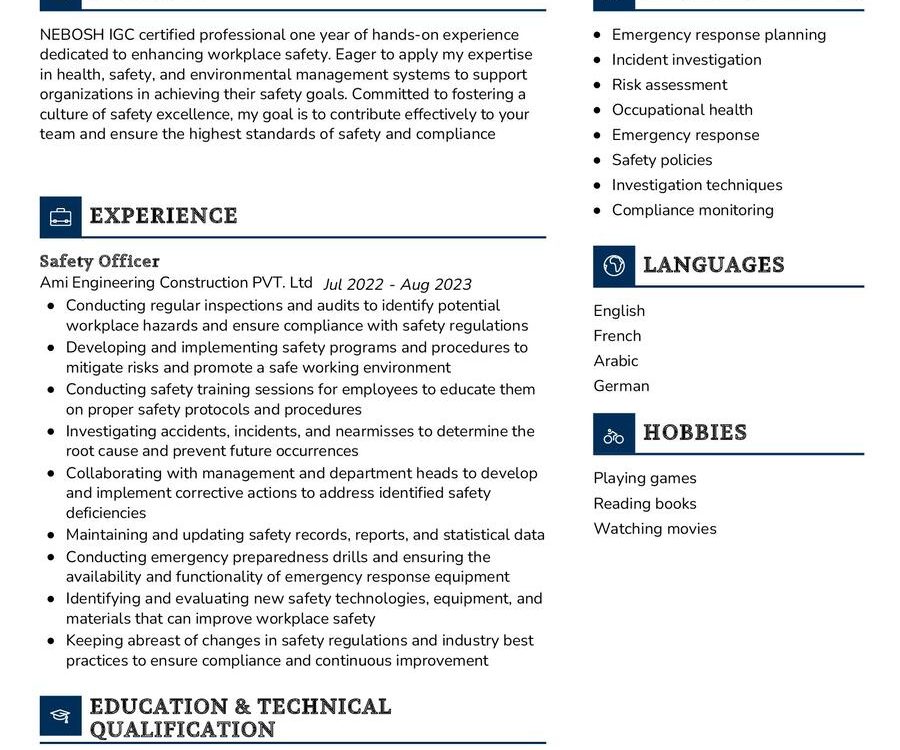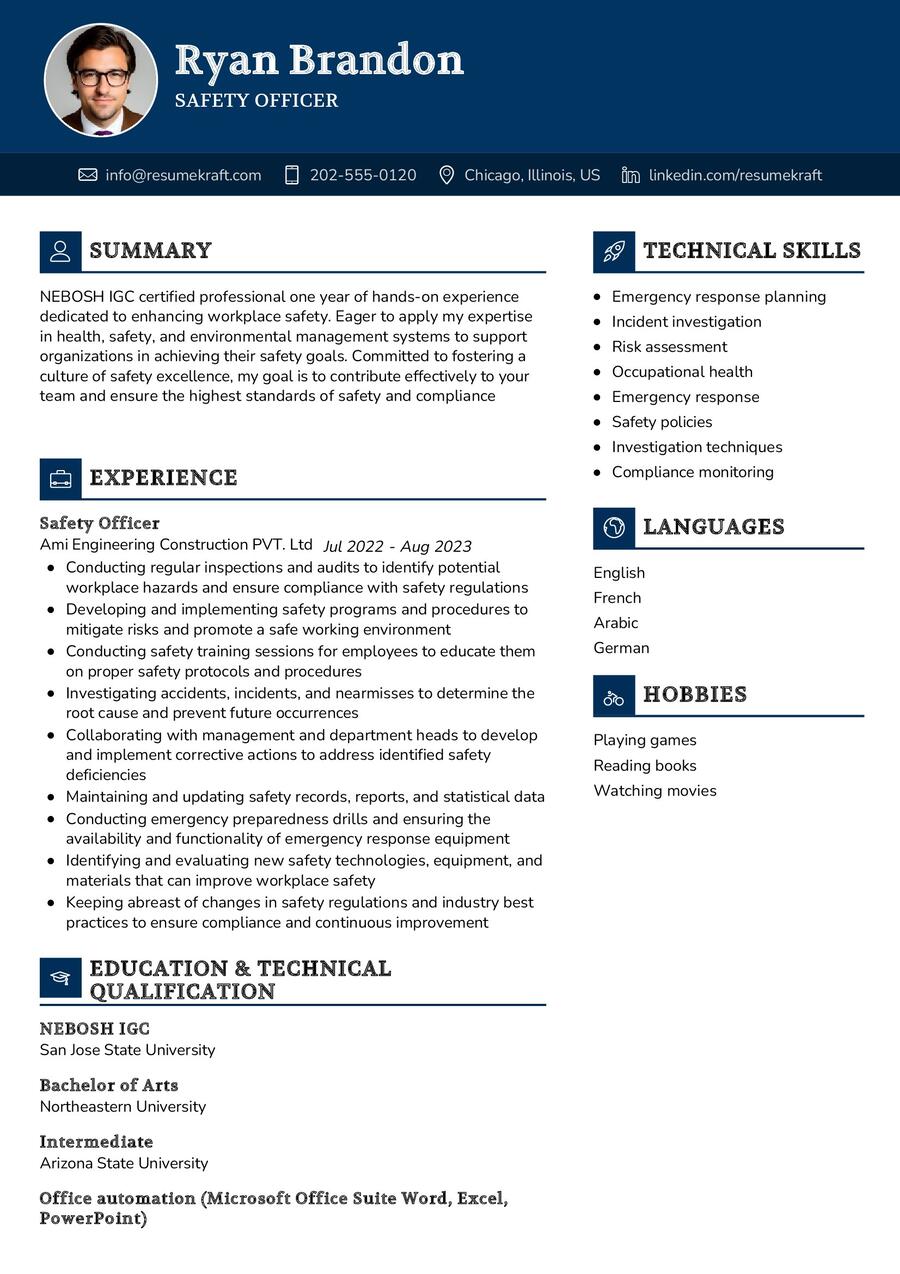Exploring the Vital Role of a Safety Officer
As the importance of workplace safety continues to gain prominence, the role of a Safety Officer becomes increasingly crucial. This position requires a unique blend of technical expertise and a commitment to creating a safe working environment for all. Let’s delve deeper into the multifaceted role of a Safety Officer, a position that demands not only a deep understanding of safety regulations but also effective leadership skills to ensure the well-being of employees.
Key Responsibilities of a Safety Officer
A Safety Officer plays a pivotal role in promoting and maintaining a safe working environment. Their responsibilities encompass a wide range of tasks aimed at preventing accidents and ensuring compliance with safety regulations. Here are some key responsibilities associated with the role:
- Conducting regular safety inspections to identify potential hazards and risks in the workplace.
- Developing and implementing safety policies and procedures to ensure compliance with local and federal regulations.
- Providing safety training to employees, emphasizing the importance of following safety protocols and using protective equipment.
- Investigating workplace accidents and incidents, analyzing root causes, and recommending corrective actions.
- Collaborating with management to develop emergency response plans and procedures.
- Monitoring and evaluating the effectiveness of safety programs and making adjustments as necessary.
- Keeping abreast of changes in safety regulations and ensuring that the organization remains in compliance.
The role of a Safety Officer is dynamic, requiring adaptability and a proactive approach to address emerging safety challenges in the workplace.
Job Requirements for a Safety Officer
Becoming a successful Safety Officer involves meeting specific educational and professional requirements. Here’s a comprehensive list of qualifications and skills that are typically sought after in candidates for this role:
- A Bachelor’s degree in Occupational Health and Safety, Environmental Science, or a related field.
- Certification in Occupational Health and Safety (e.g., OSHA certification) is highly desirable.
- Strong knowledge of safety regulations and best practices in the industry.
- Excellent communication skills to effectively convey safety information to employees at all levels.
- Analytical and problem-solving skills to identify and address potential safety issues.
- Attention to detail, with the ability to conduct thorough safety inspections and investigations.
- Leadership skills to foster a culture of safety within the organization.
- Experience in conducting safety training programs for employees.
Continued education and staying informed about industry advancements are crucial for a Safety Officer to effectively carry out their responsibilities.
Crafting an Effective Safety Officer CV
Your Safety Officer CV is a key tool in showcasing your qualifications and experiences. Here are some tips to help you create a standout CV that highlights your suitability for the role:
- Clearly outline your educational background, emphasizing your degree in Occupational Health and Safety.
- Detail any certifications you have obtained, showcasing your commitment to ongoing professional development.
- Highlight specific safety programs you have implemented and their impact on workplace safety.
- Quantify your achievements where possible, such as the percentage reduction in workplace accidents after implementing safety measures.
- Showcase your leadership skills by describing instances where you successfully promoted a culture of safety within an organization.
Your CV should not only be a reflection of your past experiences but also a forward-looking document that communicates your commitment to ongoing safety excellence.
Safety Officer Interview Tips
Preparing for a Safety Officer interview requires a strategic approach to effectively communicate your skills and experiences. Here are some tips to help you succeed in your interview:
- Be ready to discuss specific safety programs you have implemented in previous roles and their outcomes.
- Highlight your ability to communicate complex safety information to employees at all levels of the organization.
- Showcase your problem-solving skills by discussing instances where you identified and addressed potential safety hazards.
- Emphasize your commitment to ongoing learning and staying informed about changes in safety regulations.
- Discuss your approach to fostering a culture of safety within an organization and the strategies you employ to engage employees.
Remember, the interview is an opportunity to not only showcase your qualifications but also to convey your passion for creating a safe and secure work environment.
Key Takeaways for Crafting Your Safety Officer CV
As you work on your Safety Officer CV, keep these key takeaways in mind:
- Highlight your educational background and certifications to showcase your qualifications.
- Showcase specific safety programs and initiatives you have led, emphasizing their impact on workplace safety.
- Quantify your achievements where possible, providing concrete evidence of your contributions to safety.
- Emphasize your leadership skills and commitment to ongoing professional development.
Your Safety Officer CV is not just a document; it’s a testament to your dedication to creating a safe and secure work environment for all. Best of luck!
Finally, feel free to utilize resources like AI CV Builder, CV Design, CV Samples, CV Examples, CV Skills, CV Help, CV Synonyms, and Job Responsibilities to create a standout application and prepare for the Safety Officer job interview.


